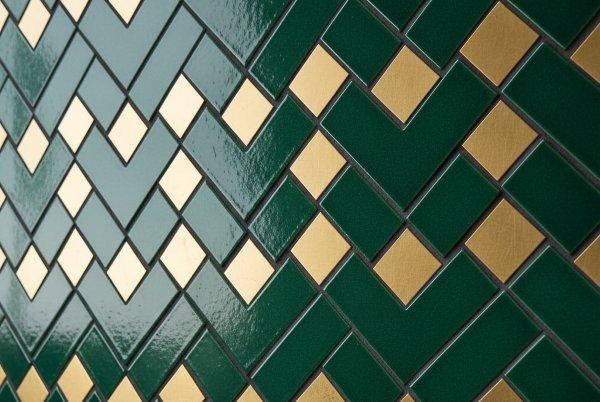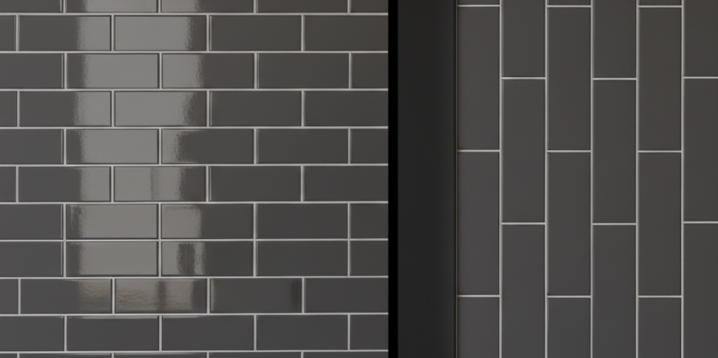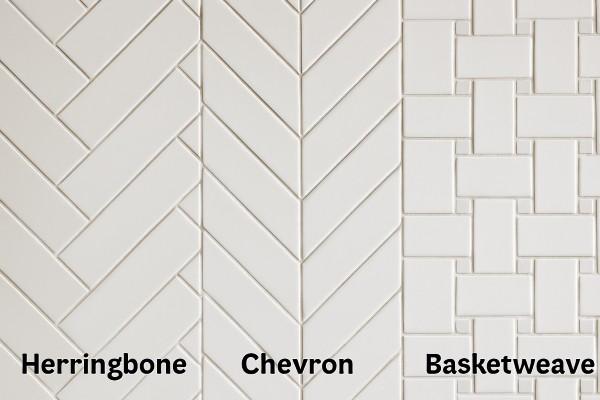The classic running bond pattern remains the most popular subway tile layout, beloved for its timeless appeal and versatility in both kitchens and bathrooms. However, modern homeowners are increasingly experimenting with creative alternatives like herringbone, vertical stacks, and chevron designs to add personality to their spaces. If you're planning a tile project, understanding the different subway tile layouts available can transform an ordinary backsplash into a stunning focal point.
Subway tiles have dominated interior design for over a century, but the way we arrange them continues to evolve. Whether you're renovating a kitchen backsplash or refreshing a bathroom shower, choosing the right pattern can dramatically impact your space's aesthetic. From traditional horizontal arrangements to bold geometric designs, each subway tile pattern offers unique visual interest and practical benefits. In this guide, we'll explore the most popular patterns, help you choose the perfect layout for your project, and share expert tips to achieve professional-looking results. At Nova Tile and Stone, we've helped countless homeowners bring their tile visions to life, and we're excited to share our insights with you.
The Timeless Running Bond: Why It's Still Number One
Understanding the Classic Layout
The running bond pattern, also known as the brick pattern, is the quintessential subway tile arrangement that launched the trend over 100 years ago. In this layout, each tile is offset by half its length from the tiles above and below it, creating the iconic staggered appearance reminiscent of traditional brickwork. This pattern became synonymous with New York City subway stations in the early 1900s, and its enduring popularity speaks to its versatility and visual appeal.
According to the U.S. Ceramic Tiles Market Report, traditional patterns continue to dominate residential tile installations, with running bond accounting for nearly 60% of subway tile layouts. The pattern works beautifully in any room size and complements virtually every design style, from farmhouse chic to contemporary minimalism. Its horizontal lines create a sense of width, making smaller kitchens and bathrooms feel more spacious.

Why Homeowners Love It
The running bond pattern's popularity stems from several practical advantages. First, it's incredibly forgiving for DIY installers because the offset pattern naturally disguises minor imperfections in tile placement. Second, the pattern creates visual movement without overwhelming the space, making it perfect for both feature walls and entire room installations. Third, it's cost-effective since the straightforward layout minimizes tile waste and reduces installation time compared to more complex patterns.
When executed with high-quality subway tiles, the running bond pattern becomes a sophisticated backdrop that allows other design elements to shine. Pair it with colored subway tile for a contemporary twist, or use subway tile with dark grout to create dramatic definition between tiles. The pattern's adaptability means it works equally well with 3x6 inch classic tiles or larger format options available when you shop tiles by size.
Product List:
Modern Subway Tile Patterns Gaining Popularity
Herringbone: Sophisticated Diagonal Drama
The herringbone subway tile backsplash has emerged as a top contender for homeowners seeking elevated design. This pattern arranges rectangular tiles in a distinctive V-shaped weaving pattern, creating dynamic visual interest through its angular geometry. Unlike running bond's horizontal emphasis, herringbone draws the eye diagonally, adding depth and dimension to walls.
Installing herringbone requires more skill and time than traditional layouts, which typically increases labor costs by 20-30%. However, the stunning results justify the investment for many homeowners. The pattern works particularly well in modern subway tile patterns for kitchen backsplashes, where it serves as an architectural focal point. When considering this layout, explore options at Nova Tile and Stone's shop to find tiles that complement your design vision.
Vertical Stack: Contemporary and Bold
Vertical subway tile installations have gained tremendous traction in recent years, especially in contemporary and industrial-inspired spaces. By stacking tiles vertically in aligned columns rather than the traditional horizontal orientation, this pattern creates striking vertical lines that draw the eye upward, making ceilings appear higher. This subway tile kitchen idea works exceptionally well in spaces with low ceilings or where you want to emphasize height.
The vertical stack bond (also called stack bond) can be executed with tiles aligned perfectly (straight stack) or with a slight offset. The straight stack version creates a clean, grid-like appearance that feels modern and architectural. This pattern pairs beautifully with subway tile bathroom trends that favor minimalist aesthetics. Browse tiles by style to find options that work perfectly for vertical installations.
Chevron: The Refined Zigzag
Chevron subway tile patterns create a sophisticated zigzag effect by placing tiles at precise 45-degree angles, with the ends cut to meet at a perfect point. This differs from herringbone, where rectangular tiles simply overlap at their ends. The chevron pattern delivers bold visual impact and works beautifully as a statement wall or feature area within a larger space.
While chevron requires expert installation due to the precision cutting needed, the result is worth the effort. This pattern has become increasingly popular for creative backsplash ideas in kitchens where homeowners want to make a dramatic design statement. The angular lines add energy and movement to a space, making it ideal for modern and eclectic design schemes.

Comparison: Popular Subway Tile Patterns at a Glance
Pattern | Difficulty Level | Best For | Visual Effect | Cost Factor |
Running Bond | Easy | Any space, DIY projects | Classic, widening | Standard |
Herringbone | Moderate-Hard | Feature walls, upscale kitchens | Sophisticated, dynamic | 20-30% higher |
Vertical Stack | Easy-Moderate | Low-ceiling rooms, modern baths | Height-emphasizing, contemporary | Standard |
Chevron | Hard | Statement areas, bold designs | Energetic, zigzag | 30-40% higher |
Basketweave | Moderate | Traditional spaces, floors | Textured, woven | 15-25% higher |
Diagonal | Moderate | Larger spaces, vintage looks | Expansive, diamond | 20-25% higher |
Creative Variations and Hybrid Patterns
Basketweave Subway Tile: Textural Interest
The basketweave subway tile pattern creates a woven appearance by alternating pairs of vertical and horizontal tiles in a repeating grid. This classic pattern adds subtle texture and visual interest without overwhelming a space. Originally popular in mid-century homes, basketweave has experienced a resurgence as homeowners seek patterns with vintage charm and tactile appeal.
This pattern works particularly well in bathrooms, mudrooms, and laundry rooms where you want a cohesive, finished look. The interlocking design provides excellent coverage and can help disguise minor wall imperfections. When executed with colored subway tile or contrasting grout colors, the basketweave pattern becomes even more pronounced. Explore products we carry to find tiles perfect for this dimensional layout.
Diagonal and Diamond Patterns
Installing subway tiles on a 45-degree angle creates a diamond or diagonal pattern that adds visual drama and makes spaces feel larger. This layout works exceptionally well in smaller bathrooms and powder rooms, where the diagonal lines create the illusion of expanded square footage. The pattern requires more tiles due to edge cutting, but the spatial enhancement often justifies the material cost.

Diagonal patterns pair beautifully with both traditional and contemporary design schemes. According to House Beautiful's bathroom remodel ideas, diagonal tile layouts remain popular for their ability to add sophistication to compact spaces. This creative approach works with various tile sizes available when you shop tiles by size.
How to Choose the Right Pattern for Your Space
Considering Room Size and Ceiling Height
Your space's dimensions should significantly influence your pattern choice. In rooms with low ceilings, vertical subway tile patterns draw the eye upward, creating the perception of height. Conversely, horizontal patterns like running bond make narrow spaces feel wider. For small bathrooms or compact kitchen backsplashes, simple patterns prevent visual clutter, while larger spaces can accommodate bold, complex designs like herringbone or chevron.
Room proportion also matters. In a long, narrow galley kitchen, a horizontal running bond emphasizes the room's length, while a vertical stack might help balance the proportions. Consider how natural and artificial light interacts with your chosen pattern, as shadows and highlights can dramatically affect the pattern's visibility and impact throughout the day.
Matching Pattern to Design Style
Your home's overall aesthetic should guide your pattern selection. Traditional and farmhouse styles typically pair well with classic running bond, basketweave, or subtle herringbone patterns. Contemporary and modern spaces shine with vertical stacks, chevron, or geometric hybrid patterns. Industrial designs often feature subway tile with dark grout in running bond or stack patterns to emphasize the tiles' edges and create a grid-like appearance.
Don't forget about color and finish. The pattern you choose will interact with your tile color and grout selection to create the final effect. Browse tiles by color to see how different hues work with various patterns. Glossy white tiles in a herringbone pattern create a bright, clean look, while matte black tiles in a vertical stack deliver bold, dramatic impact.
Pros and Cons of Complex vs. Simple Patterns
Simple Patterns (Running Bond, Vertical Stack)

Pros:
- Lower installation costs due to easier execution
- DIY-friendly for confident homeowners
- Less tile waste (typically 5-10% overage needed)
- Faster installation timeline
- Timeless appeal that won't feel dated
- Easier to repair or match if tiles crack
- Work well in any space size
Cons:
- May feel less distinctive or special
- Limited "wow factor" compared to complex patterns
- Less ability to make a bold design statement
- Might not add as much perceived value to high-end renovations
Complex Patterns (Herringbone, Chevron, Basketweave)

Pros:
- Creates stunning visual focal points
- Adds architectural interest and sophistication
- Can increase perceived home value
- Showcases quality craftsmanship
- Makes a memorable design statement
- Elevates standard materials to luxury status
Cons:
- Higher labor costs (20-40% increase typical)
- Requires experienced professional installation
- More tile waste (15-20% overage recommended)
- Longer installation timeline
- Can overwhelm very small spaces
- More difficult to execute perfect repairs
- May require special considerations for porcelain vs ceramic tiles
Step-by-Step Guide: Planning Your Subway Tile Installation
Step 1: Measure and Calculate Materials
Begin by accurately measuring your installation area in square feet. Multiply length by width for each surface, then add all areas together. Add 10% extra for simple patterns like running bond, or 15-20% for complex patterns to account for cuts and mistakes. If you're using decorative tile inserts, calculate those separately. Visit Nova Tile and Stone locally to get expert help with material calculations.
Step 2: Choose Your Pattern and Layout Strategy
Select your pattern based on your space dimensions, design style, and installation budget. Create a layout plan by drawing your wall to scale and sketching the tile pattern. Identify where you'll start installation, ensuring your pattern centers on focal points like windows or range hoods. Determine whether you'll work from bottom to top or use a ledger board at mid-height for support.
Step 3: Select Tiles, Grout, and Adhesive
Choose tiles that complement your pattern choice. Larger format tiles work well for simple patterns, while standard 3x6 inch tiles offer flexibility for any design. When you shop tiles by type, consider maintenance requirements and room humidity levels. Select grout color carefully, as this dramatically affects the pattern's visibility. Dark grout emphasizes each tile and pattern geometry, while matching grout creates a seamless appearance.
Step 4: Prepare the Surface
Ensure your wall surface is clean, level, and structurally sound. Repair any damage, remove old tiles if renovating, and apply appropriate backer board in wet areas. A properly prepared surface is crucial for professional results and long-term durability. For detailed guidance, reference resources or how to replace bathroom tiles.
Step 5: Install and Finish
Begin installation according to your layout plan, using spacers for consistent grout lines. Work in small sections to prevent adhesive from drying. Allow proper drying time (typically 24-48 hours) before grouting. Apply grout carefully, removing excess promptly to prevent haze. Seal grout in moisture-prone areas after it fully cures. Following proper maintenance procedures will keep your tiles looking beautiful for decades.
Design Trends: What's Hot in Subway Tile for 2025
The latest kitchen trends for 2025 showcase subway tiles in unexpected ways. Colored subway tile in sage green, terracotta, and navy has replaced the all-white aesthetic, with homeowners mixing colors within single installations for unique, personalized looks. Textured and dimensional subway tiles add depth, while larger format "subway" tiles (4x12 or 6x12 inches) create contemporary, streamlined appearances.
Grout trends have shifted dramatically, with contrasting grout colors gaining popularity over matching tones. Subway tile with dark grout creates graphic, grid-like patterns that emphasize architectural details. Additionally, mixing patterns within one space has become acceptable, such as using herringbone on a feature wall with running bond elsewhere, or combining different tile sizes for visual hierarchy.
Sustainability consciousness has influenced tile choices as well, with homeowners seeking locally sourced materials and environmentally responsible manufacturing. When you contact us at Nova Tile and Stone, we can discuss eco-friendly tile options that align with contemporary values without sacrificing style.
Making Your Decision: Pattern Selection Checklist
Before finalizing your subway tile pattern, consider these essential factors:
Budget Considerations: Determine your total project budget, including materials and labor. Simple patterns keep costs down, while complex designs require skilled installation. Factor in potential cost increases of 20-40% for intricate patterns.
Skill Level: Honestly assess whether you'll DIY or hire professionals. Running bond and vertical stack are DIY-friendly, while herringbone and chevron typically require experienced installers. Find qualified tile installers to ensure quality results.
Long-term Appeal: Choose patterns with staying power. Classic layouts remain appealing across design trends, while very trendy patterns might feel dated in 5-10 years. Consider your home's resale value if you plan to sell eventually.
Maintenance Requirements: Some patterns show dirt, soap scum, or water spots more readily than others. Textured patterns and dark grout require more frequent cleaning. Consider your lifestyle and cleaning preferences when selecting both pattern and materials.
Personal Style: Ultimately, choose a pattern that resonates with your aesthetic preferences and makes you happy. Your home should reflect your personality, and the right tile pattern can express your unique style while serving practical needs.
Conclusion
The most popular subway tile pattern remains the timeless running bond, but modern homeowners have embraced creative alternatives like herringbone, vertical stacks, and chevron designs to personalize their spaces. Your ideal pattern depends on your room's dimensions, design style, budget, and personal preferences. Whether you choose a classic layout or bold geometric arrangement, quality materials and proper installation ensure lasting beauty and functionality.
At our tile and stone store, we're passionate about helping homeowners transform their spaces with stunning tile installations. Our extensive selection includes options for every pattern, style, and budget. Visit our showroom to see patterns in person, touch different textures, and get expert advice tailored to your project. From initial design consultation to final installation recommendations, we're here to make your tile vision a reality. Explore our complete collection today and start creating the space you've always imagined. When you're ready to begin, learn more about us and discover why we're the trusted choice for homeowners throughout the region.
Whether you're tackling a complete house renovation or a simple backsplash update, the right subway tile pattern sets the foundation for a beautiful, functional space that you'll love for years to come.
Frequently Asked Questions
What is the most popular subway tile pattern for kitchens?
The running bond (brick) pattern remains the most popular choice for kitchen backsplashes due to its timeless appeal, cost-effectiveness, and versatility. However, herringbone and vertical stack patterns are rapidly gaining popularity among homeowners seeking more contemporary or sophisticated looks.
Is herringbone more expensive than regular subway tile pattern?
Yes, herringbone installation typically costs 20-30% more than standard running bond patterns due to increased labor time, skill requirements, and material waste. The pattern requires precise cutting and careful alignment, which extends installation time and requires experienced professionals for best results.
What grout color should I use with white subway tile?
White or light gray grout creates a seamless, cohesive appearance, while dark gray or black grout emphasizes the tile pattern and creates a bold, graphic look. Your choice should reflect your design style: light grout for traditional or minimalist spaces, dark grout for contemporary or industrial aesthetics.
Can I install subway tile in a vertical orientation?
Absolutely! Subway tiles can be installed in several vertical configurations. You can rotate traditional patterns like running bond 90 degrees, creating a vertical brick pattern that makes ceilings appear higher. Alternatively, the vertical stack pattern (where tiles align directly in columns with no offset) creates a contemporary, grid-like aesthetic. Both approaches are popular in modern bathrooms and kitchens and create dramatically different visual effects from standard horizontal layouts.
How much extra tile should I order for complex patterns?
For simple patterns like running bond, order 10% extra material. For complex patterns like herringbone, chevron, or diagonal layouts, order 15-20% extra to account for cuts, waste, and potential future repairs. Always round up when calculating quantities to ensure you have sufficient material.